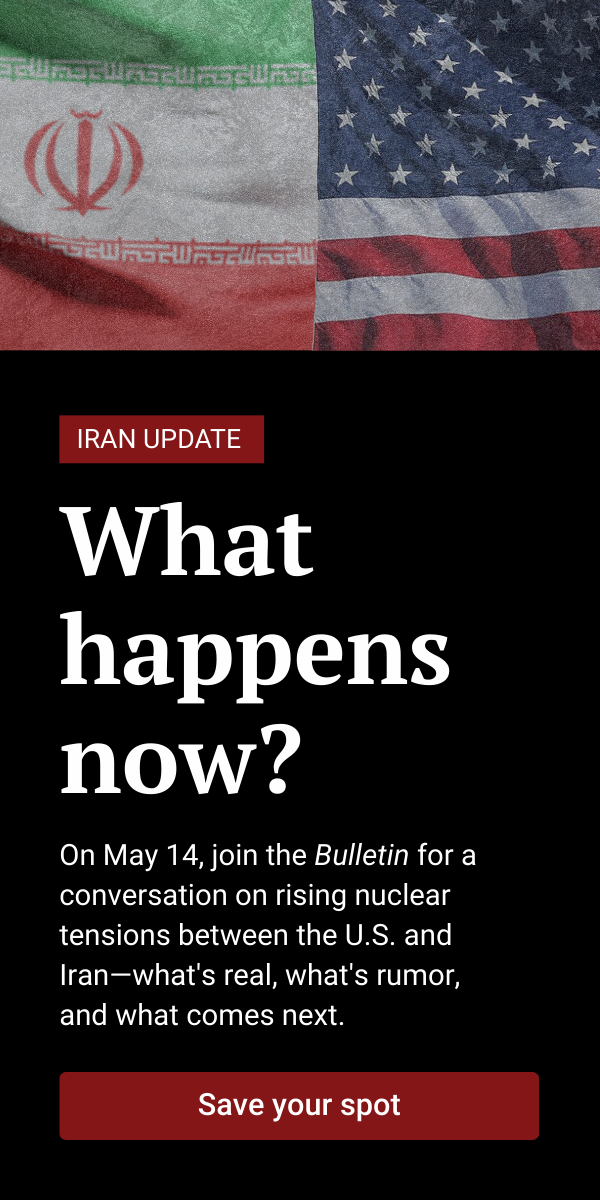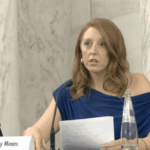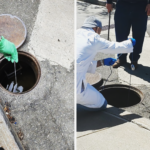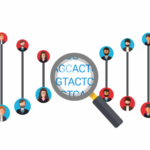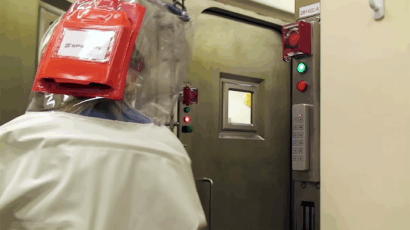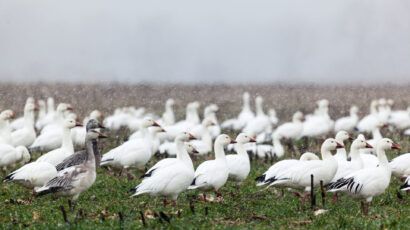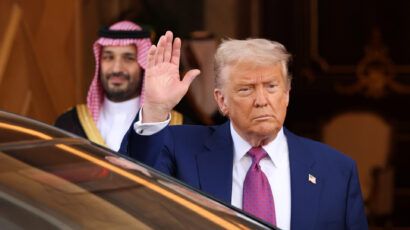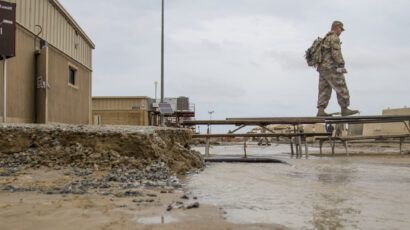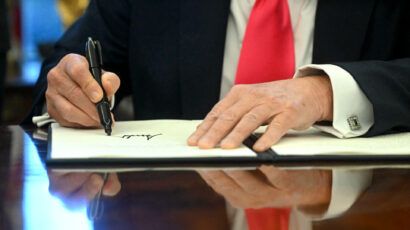Trump’s last minute gain-of-function policy could sow researcher confusion
By Matt Field | May 20, 2025
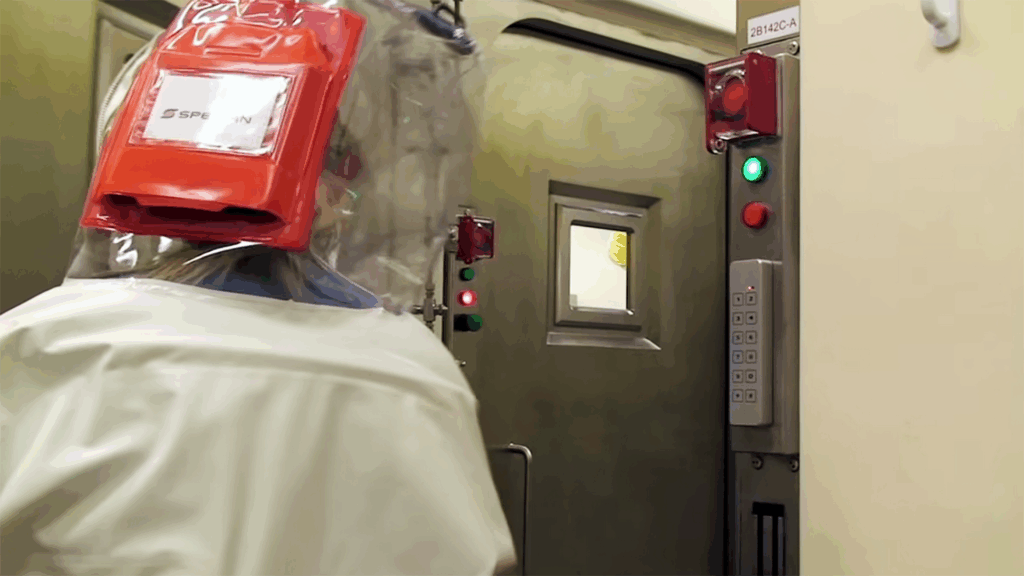 A scientists entering a biosafety level 4 (BSL-4) lab. Courtesy: National Institute of Allergy and Infectious Diseases/Wikimedia Commons.
A scientists entering a biosafety level 4 (BSL-4) lab. Courtesy: National Institute of Allergy and Infectious Diseases/Wikimedia Commons.
In 2011, two teams of scientists created an uproar after revealing they had separately mutated the H5N1 bird flu virus to spread among ferrets through the air, something it didn’t do naturally. The teams had created a virus that, were it to be found in nature or leak from a lab, would be a potential pandemic threat, experts said. And critics questioned whether the benefits of the experiments had outweighed the risks.
The researchers, meanwhile, argued the studies provided vital information about how H5N1 could evolve, allowing health experts watch for those changes in nature. Amid this outcry over “gain-of-function” research and following high profile lab mishaps, the Obama administration in 2014 paused funding for studies that made pathogens more dangerous and initiated a review of US government policy. The funding spigot was turned back on after the government released a new policy in 2017 to tighten oversight over gain-of-function research.
The COVID pandemic, with its origins possibly linked to coronavirus research in Wuhan, China, again focused attention on the US government’s approach to gain of function. US officials like Anthony Fauci, the former director of the National Institute of Allergy and Infectious Disease, claimed that the government had not funded that type of work in Wuhan, the pandemic’s original epicenter. Subsequent reporting, however, suggested that a US-funded research group had been working with coronavirus researchers at the Wuhan Institute of Virology on experiments that might indeed have qualified as “gain-of-function research of concern.”
The National Institutes of Health in 2021 said that the US group, EcoHealth Alliance, had violated a grant condition that required it to report an experiment in Wuhan that had created viruses that made mice sicker, fueling suspicions that the government had not been properly regulating risky biological research. Indeed, only three studies were ever subjected to the high-level government review called for by the 2017 gain-of-function policy.
The pandemic-era attention to gain of function led the government to once again review its oversight over pathogen research, a process which began in 2020 and didn’t conclude until the Biden administration released a new policy in 2024. That policy laid out a system of review for dual-use research, which creates knowledge subject to misuse, and research that increases the pathogenicity or transmissibility of pathogens. The policy, which broadened the scope of covered research compared to previous policies, had been scheduled to go into effect this month, but President Donald Trump issued an executive order May 5 that calls for a new or revised policy and an end to funding for what it calls “dangerous gain-of-function research” in some foreign countries. The order throws into question the fate of the years-in-the-making 2024 policy, Gregory Koblentz, a professor at George Mason University’s Schar School of Policy and Government and an expert in biosafety and biosecurity, told me. “Research institutions spent a lot of time and effort to actually develop new systems and protocols and trainings to implement that new 2024 policy. Having this executive order getting thrown out at the last minute really just threw a huge wrench into that process.”
I talked with Koblentz about Trump’s executive order and what it will mean for pathogen research.
The following interview has been edited for length and clarity.
Matt Field: A new policy that dealt with gain-of-function research on dangerous pathogens was just about to go into effect when Trump’s executive order came out. Why do you think the Trump administration pulled the rug out from under the long-deliberated policy?
Gregory Koblentz: The Trump administration has had long-standing concerns about quote, unquote, gain-of-function research that they have blamed for causing the COVID-19 pandemic due to funding from NIH. It’s an extension of that concern that this research is so dangerous that it needs to have the strongest possible safeguards, if not an outright ban.
The timing really is quite problematic because this new policy was announced the day before the 2024 policy was supposed to go into effect. And that had not only taken quite a while to develop, but research institutions spent a lot of time and effort to actually develop new systems and protocols and trainings to implement that new 2024 policy. Having this executive order getting thrown out at the last minute really just threw a huge wrench into that process. It’s been incredibly disruptive for the biomedical research community.
The executive order calls for a more permanent policy to be developed in four months. Is that enough time to come up with something appropriately comprehensive?
Even under the best conditions, that timeline is extremely ambitious, and given the cuts to personnel at NIH and other science agencies, I think that that timeline will be incredibly difficult for them to meet with any well-thought-out, widely consultative process to develop it.
I don’t see any real good public policy reason why the Trump administration could not have just announced that they’re going to conduct a new review. And so they might come with a new policy, but the 2024 policy could still go into effect as planned.
There was no need for them to call into question the validity of the 2024 policy or to raise the specter of a pause, because we really don’t know how long it will take them to develop a new policy. And then even once they have new policy, how much longer will it take them to implement it? These are two huge question marks that are hanging over the infectious disease research community that are creating a lot of unnecessary anxiety.
Do you expect that whatever comes out of this will be the result of a consultative process involving stakeholders?
The only way this kind of policy can be successful and achieve its goal of both mitigating the risks posed by dual-use research, while harnessing the benefits of life sciences research and biomedical research, is if it’s developed in close consultation with the scientists, with the research institutions, with the funders, with the biosafety and biosecurity experts. If it’s done any other way, the policy will likely not get that balance of benefits and risks right, and it will have a huge potential to really hinder scientific research in the United States and innovation in the life sciences.
How much work do you think will actually get caught up by this new executive order?
It is very broadly worded, and, in my opinion, very poorly worded, which makes it really hard to make an estimate. And that is problematic, because you have a large swath of the infectious disease research community trying to figure this out, as opposed to doing their work and advancing the science. The way this was rolled out creates uncertainties that could have been easily avoided if this had been done either in a more carefully deliberate, consultative way, or the product was more carefully defined and worded. We had neither of those.
I’ve seen an estimate that there could be 1,000 NIH-funded projects that are caught up in this. But I think at this point, we don’t know.
A fact sheet says that the order will “discourage the subjective interpretation of policies that researchers have used in the past to evade biosafety and biosecurity oversight.” Is that aspect of the order—that they are trying to reduce people subjectively interpreting rules—something that wasn’t done adequately enough in the policy that was set to go into effect before the executive order came out?
The 2024 policy was very detailed in both the policy itself, and then there was an 80-page implementation guidance that went along with it to help explain, “Here’s what we mean by these different terms. Here are different examples. Here’s what is covered. Here’s what’s not covered.” So that provided much more structured guidance to understanding what experiments would be considered covered by the policy and what wouldn’t.
This executive order instead has a bunch of terminology that’s poorly defined or is overly broad, and so it actually invites more subjective interpretations, because the meanings are just not clear on their face.
One would hope that would be resolved in the next 120 days, when the new policy is due out. It begs the question of why they just didn’t wait 120 days to get it right and focus on what they say they want to achieve, as opposed to throwing the entire system into turmoil when it was getting ready for a major upgrade. Because the 2024 policy was a major upgrade in how we conduct oversight over dual-use research.
Confusingly, this executive order doesn’t quite revoke that policy. It’s a bit unclear what the status of the 2024 policy is.
In your opinion, the 2024 policy reduces the ability of people to interpret rules more subjectively. Does it adequately include enforcement or oversight, as the executive order says it doesn’t?
There is just some level of subjectivity to dual-use research, because you are balancing two intangible factors: benefits and risks. But the key is you have a process by which you examine what are the benefits and what are the risks. You have it done by a multidisciplinary group of experts who can bring in different perspectives from virology, from public health, and from biosafety and biosecurity. So that to me is really the key, and the 2024 policy did have a good system for doing that.
I will say that this new executive order certainly has much stronger enforcement provisions in it. Given the nature of this area involving a level of subjectivity and a need to balance between two important values, I worry that having excessive penalties for a quote, unquote violation of the executive order of the regulations will just have a chilling effect on research.
And for researchers, for legitimate reasons, this is a hard problem to balance. I don’t know if I can get it right or wrong. I will try my best. But I’m afraid that if I get it wrong, even after a good faith effort, I will be penalized, and my institution, my entire institution, will be penalized for a good faith effort to adjudicate the benefits and risks of doing this research. And if someone disagrees with that and they can then shut off funding to my entire institution.
That’s draconian, and that’s just not an appropriate approach to this problem. I’m concerned that there is this chilling effect that could very well happen in a very broad swath of biomedical research, because, as this executive order is worded, it covers research with all infectious agents and toxins. That is a very worrisome aspect of this policy.
Does the fact that the executive order applies to work in some foreign countries make it less potentially onerous?
I don’t think that’s the case. The executive order definitely takes different approaches to research done in countries like China, but then it has a much broader category of other life sciences research that is done in other countries of concern, or foreign countries for which there’s no adequate oversight. And so there’s another big category that we don’t know what that means: What other countries are caught up in this policy?
Because a lot of these diseases are not endemic to the US. They’re primarily problems in other countries that could spread here or could have regional effects, but they’re not endemic to the US. So American researchers need to work with people in other countries to study them.
Do you have any guesses as to what the permanent policy might look like?
It’s hard to predict anything this administration will do. The key thing is that there needs to be a transparent, multi-stakeholder process for reviewing and revising the 2024 policy and coming up with whatever new policy that the Trump administration is interested in pursuing, and that process is necessary to make sure that you have a well-crafted policy and to make sure that it has legitimacy and acceptance and buy in from the stakeholders. Right now, they’re off to a bad start by dropping this bombshell of an executive order the day before another long-awaited policy is about to go into effect. That raises some serious questions about the future of this policy under this administration.
Does Trump coming down hard on the side of gain and function is a dangerous practice that caused the pandemic—does that help the side of the argument that wants to see a lot more restrictions on this sort of research?
It does both. It provides ammunition to those who want to ban quote unquote gain-of-function research, which is a horribly misunderstood term, but also it does have the effect of politicizing this entire debate.
If whether you support gain of function or not depends on what you think caused the pandemic or what administration you vote for, that’s not a good thing. I have long been working to enhance global biosafety and biosecurity, even though I don’t think that the Wuhan Institute of Virology was the likely source of COVID-19.
The fact we can’t rule out the lab as the source of the pandemic is concerning. That’s why we need to have stronger biosafety and biosecurity oversight on all high containment labs, so that we could rule out labs in the future, or if they really were responsible, we would have much better evidence that that’s the case. This unfortunately has been highly politicized by the administration, which is very problematic, because biosafety and biosecurity should be bipartisan issues, and we really need to treat them as such.
Together, we make the world safer.
The Bulletin elevates expert voices above the noise. But as an independent nonprofit organization, our operations depend on the support of readers like you. Help us continue to deliver quality journalism that holds leaders accountable. Your support of our work at any level is important. In return, we promise our coverage will be understandable, influential, vigilant, solution-oriented, and fair-minded. Together we can make a difference.
Keywords: gain-of-function research
Topics: Biosecurity

